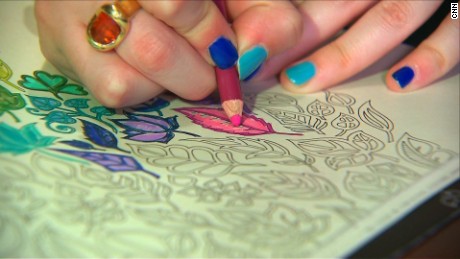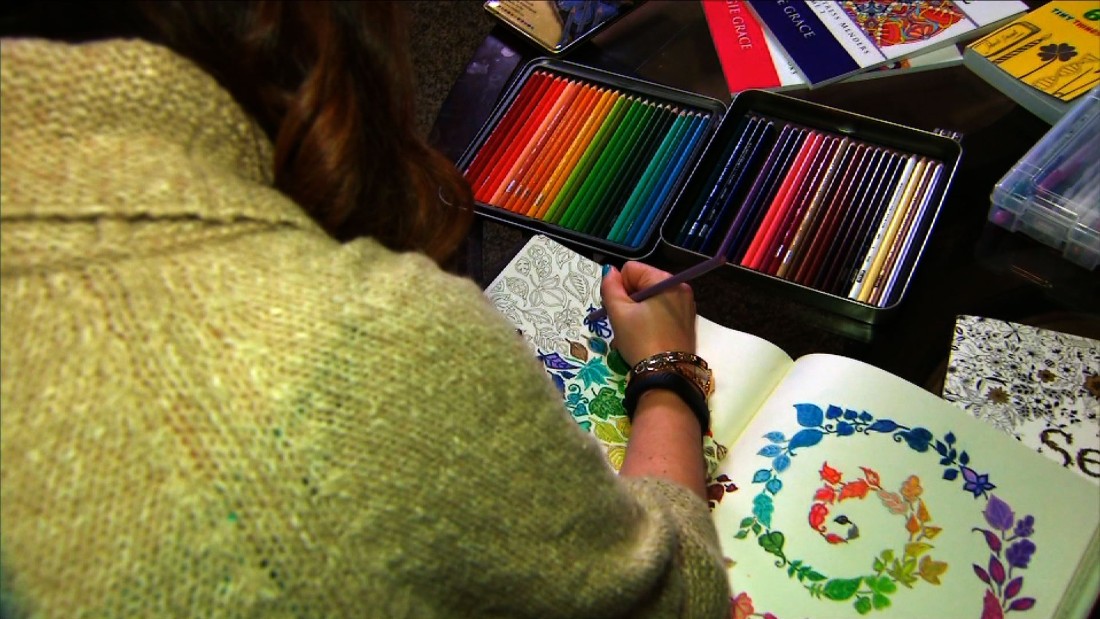
Coloring books are no longer just for the kids. In fact, adult coloring books are all the rage right now. And while researchers and art therapists alike have touted the calming benefits for over a decade, it’s childhood favorite Crayola that’s gotten adult coloring books some serious grown-up attention. The famous crayon makers just launched a set of markers, colored pencils and a collection of adult coloring books, Coloring Escapes, last month.
And though the first commercially successful adult coloring books were published in 2012 and 2013, the once-niche hobby has now grown into a full-on trend, with everyone from researchers at Johns Hopkins University to the editors of Yoga Journal suggesting coloring as an alternative to meditation. Here’s why you might want to open a page and say ahhhhhh.
DailyBurn: The One Thing That Helped Me Lose Weight
Art Therapy, Adult Coloring Books and Your Mental Health
According to the American Art Therapy Association, art therapy is a mental health profession in which the process of making and creating artwork is used to “explore feelings, reconcile emotional conflicts, foster self-awareness, manage behavior and addictions, develop social skills, improve reality orientation, reduce anxiety and increase self-esteem.” So basically, it’s similar to good old therapy. (Don’t think you need therapy? Here’s why you should take a mental health day now) Yet art therapy is not only about learning and improving yourself it’s a means of personal expression, too.
DailyBurn: 21 Meal Prep Pics from the Healthiest People on Instagram
However, it is important to note that using an adult coloring book is not exactly the same as completing an art therapy session. “Coloring itself cannot be called art therapy because art therapy relies on the relationship between the client and the therapist,” says Marygrace Berberian, a certified art therapist and the Clinical Assistant Professor and Program Coordinator for the Graduate Art Therapy Program at NYU. And while art therapy was first practiced in the 1940s, the first research on using coloring as therapy is generally believed to have only begun as recently the mid 90s, according to Art Therapy: Journal of the American Art Therapy Association.
DailyBurn: 9 Weight Loss Success Stories You’re Going to Want to See
The Health Benefits of Adult Coloring Books
Despite the fact that coloring and art therapy aren’t quite the same thing, coloring does offer a slew of mental benefits. “Coloring definitely has therapeutic potential to reduce anxiety, create focus or bring [about] more mindfulness,” says Berberian. Groundbreaking research in 2005 proved anxiety levels dropped when subjects colored mandalas, which are round frames with geometric patterns inside. Simply doodling, though, had no effect in reducing the other subjects’ stress levels.
Just like meditation, coloring also allows us to switch off our brains from other thoughts and focus only on the moment, helping to alleviate free-floating anxiety. It can be particularly effective for people who aren’t comfortable with more creatively expressive forms of art, says Berberian, “My experience has been that those participants who are more guarded find a lot of tranquility in coloring an image. It feels safer and it creates containment around their process,” she adds.
How to Get Started
Want to fill in some pages? Keep in mind, if you’re dealing with significant mental or emotional issues, art therapy is going to be more effective than coloring solo. But for those who just need a hobby to help them chill out, these books could be the ticket. As Berberian puts it, “I truly believe that people should be engaging in activities that make them feel restored.”
According to ColoringBooks.net, adults should skip the crayons and go straight for the colored pencils (precision is everything when it comes to tuning in). And Crayola has a complete guide that shows how to take your tools up a notch by blending colors, shading and adding highlights and lowlights to your newfound masterpieces. Now get scribbling!
Read more here: http://edition.cnn.com/




